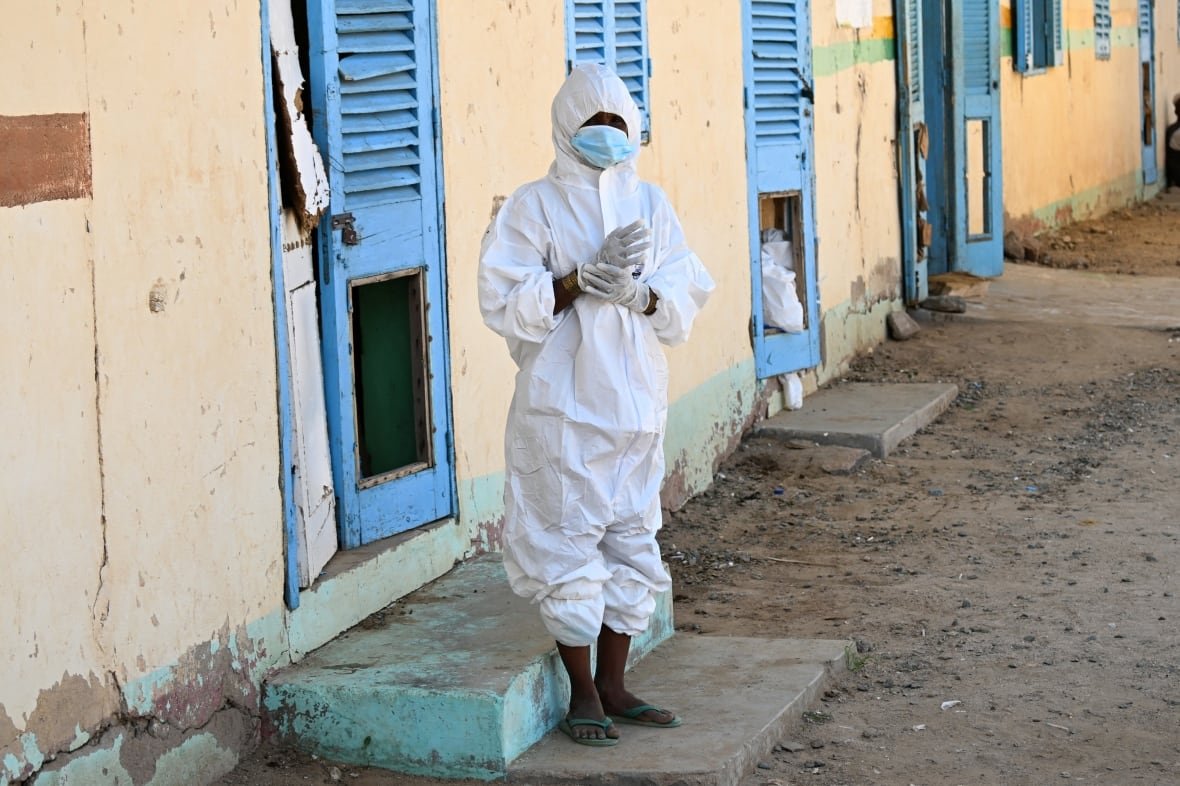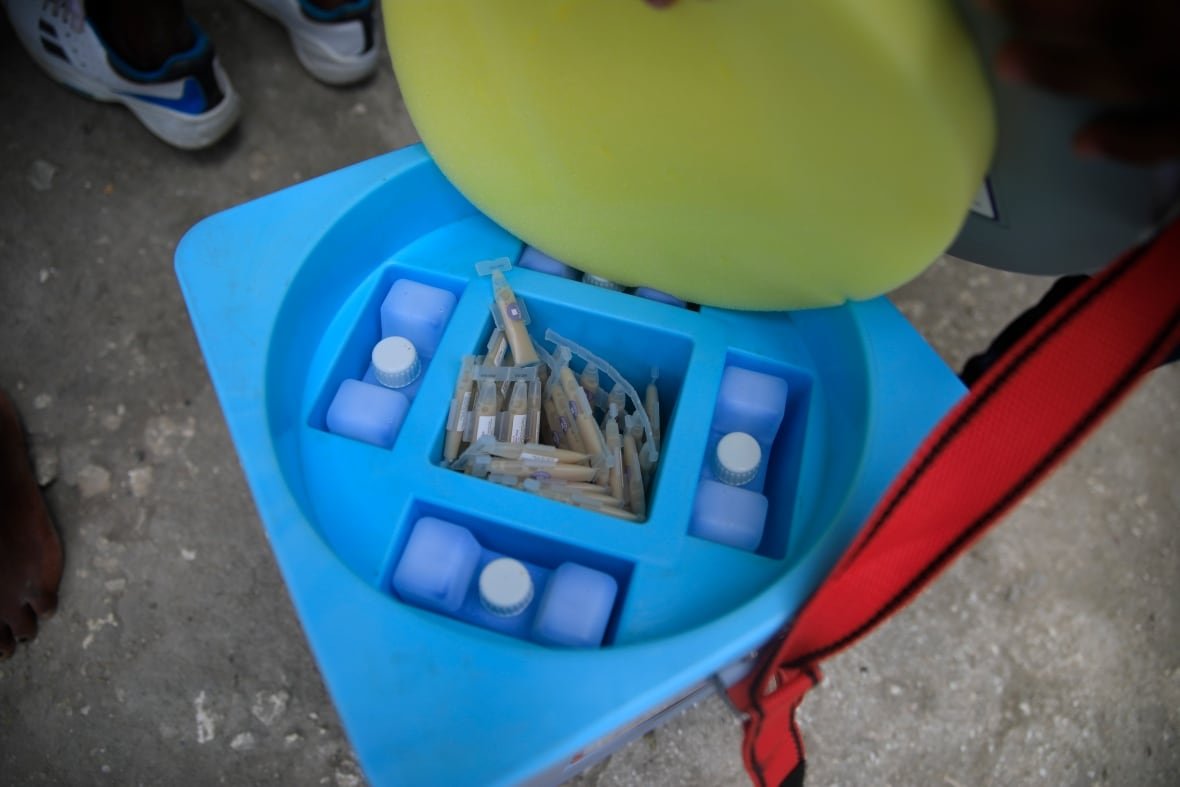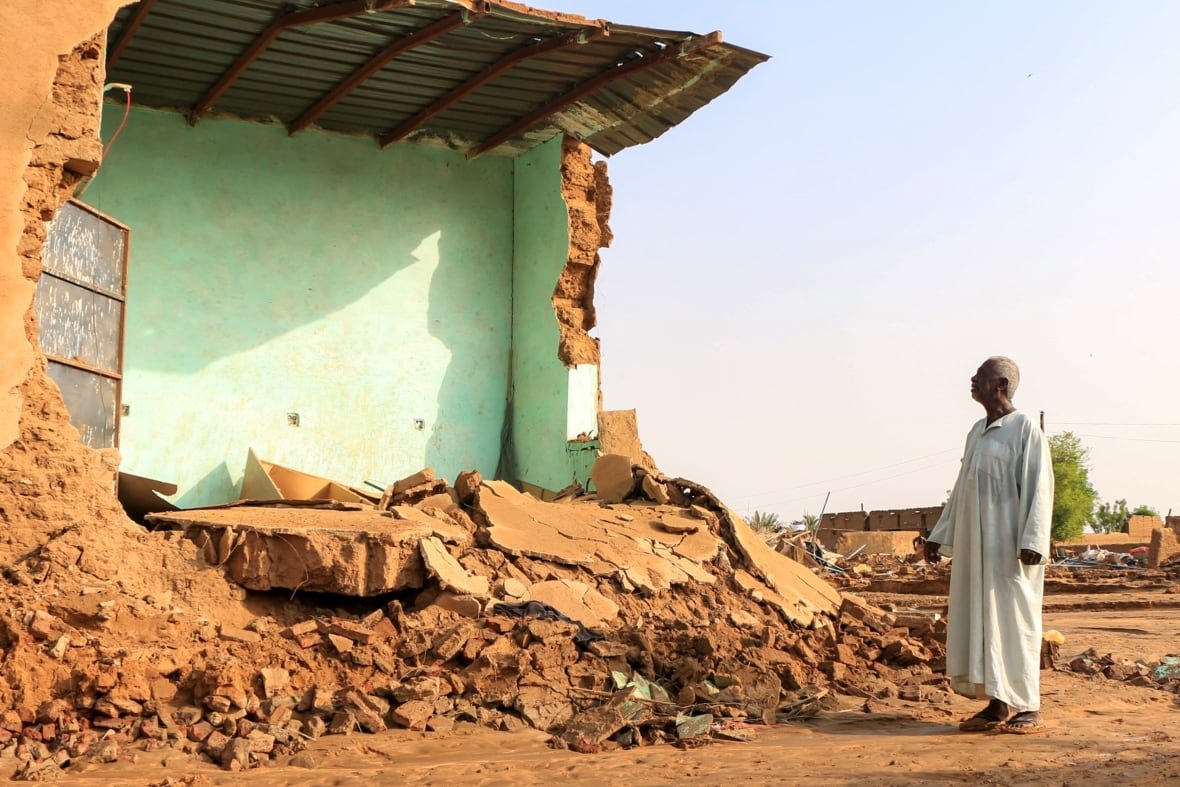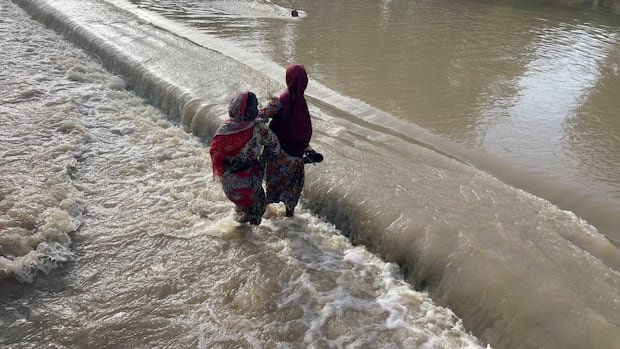In west and central Africa, recent heavy rains and flooding show climate change is another thumb on a scale already weighed down by war and disease.
New research suggests extreme weather events in Sudan, Nigeria, Chad, Cameroon and Niger last month — which killed more than a thousand people and displaced hundreds of thousands more — were made worse by climate change, which in turn made an already devastating cholera outbreak spread faster.
One finding from the World Weather Attribution (WWA) study, which compared the recent weather to weather patterns in a world without human-caused climate change, suggested Sudan could expect weather events like this every three years.
“The majority of the climate models that we looked at indicate a trend towards more extreme rainfall events in this region,” explained Clair Barnes, a statistician with WWA and a research associate at Imperial College London.
Experts say the repeated blows of these storms strain any chance of recovery, as well as deepen existing vulnerabilities within communities.
“You’ll find that the capacities of the people to respond to these flooding becomes quite low, especially with the frequent occurrence,” said Joyce Kimutai, a co-author on the WWA study and researcher at the Centre for Environmental Policy at Imperial College London.
Cholera cases explode
More intense rains and flooding increases the spread of waterborne diseases such as cholera. In Nigeria, more than 350 people have died from the disease this year — with 150 of them in the last month, according to the World Health Organization. The country had already been dealing with an outbreak in early June.
In Sudan, gripped by warring rival military factions, more than 15,000 cases and more than 400 deaths have been reported in the last month.

“Let’s call it how it is: this is a disease of poverty,” says Dr. Isaac Bogoch, infectious diseases specialist with Toronto General Hospital, adding that displacement from conflict, lack of access to good hygiene, sanitation and clean water infrastructure all lead to the “the perfect setup for waterborne outbreaks.”
Cholera kills through rapid dehydration via profuse watery diarrhea. While some people can recover by drinking the right fluids, some may need intravenous help or even antibiotics. There are also oral vaccines, but the WHO says the global stockpile is currently depleted.
Bogoch attributes this to an overwhelming global need in the last few years. He says an acknowledgement that climate change is going to make the situation worse is needed.

“If we’re going to see more outbreaks and those outbreaks are going to be larger, we need more vaccines to deploy,” Bogoch said.
How common will the rain and floods be?
The WWA research found that month-long spells of heavy rain have become common in Sudan. This kind of extreme weather is expected to happen every three years in today’s climate, and be 10 per cent heavier due to climate change.
In addition, the rainfall that hit Nigeria, Niger, Cameroon and Chad this year, along with Sudan, was similar to what the region experienced in 2022. The WWA studied that previous rainfall and found that the rain is now five to 20 per cent heavier because of climate change.
The researchers did not do a new attribution analysis for the four countries apart from Sudan, because the results would be similar to the 2022 study. They said that the rain and floods in the region are to be expected since their previous study found similar heavy rain will happen, on average, every five to 10 years in today’s climate.
“This is only going to keep getting worse if we keep burning fossil fuels,” Barnes told reporters in a press briefing. The study’s estimates are based on the current climate at 1.3 degrees warmer on average than pre-industrial times.
“If we reach two degrees, which is expected to happen as early as the 2050s … these kinds of downpours could happen every year,” warned Barnes.
Will countries be able to recover?
If climate disasters happen more frequently, countries also lose the time they need to recover from one before the next one hits.
“In Nigeria, many of the most impacted areas had yet to fully recover from the 2022 floods … demonstrating a cyclical pattern of vulnerability,” said Maja Vahlberg, a member of the WWA team and technical adviser at the Red Cross Red Crescent Society.

Further complicating matters, is that the right solutions may not even exist right now in these nations. Jola Ajibade, who studies climate risk and vulnerable populations at Emory University, says one example is the basic money to rebuild homes after disaster.
“Certainly there is no insurance for people in informal settlements, who are some of the biggest groups impacted by floods and storms,” Ajibade said, suggesting micro-insurance schemes and ways to climate-proof these homes, which tend to be made of weaker, malleable materials.
But she warns rebuilding without consultation at every step could lead to more displacement.
“The traditional argument is ‘let’s get people out of the way, let’s redesign this place and make it livable and safe’,” Ajibade said, explaining that people get moved out and often can’t afford to come back to a newly rebuilt community.
“It’s become a form of climate gentrification.”
On the health-care side, another challenge is that where these outbreaks have been happening — in low-income regions or places experiencing conflicts — are less equipped to deal with public health emergencies in the first place.
With limited resources, it becomes extra important to figure out when and how those future outbreaks will play out, so money and help can be directed to the most important places.
Caroline Wagner, an assistant professor in bioengineering at McGill University, studies the pathways of transmission of various diseases — and especially how climate change will influence how diseases will spread.
“We do need to figure them out if we are to prepare for something like cholera in the future,” she said.
“So let’s say we know that, you know, the range of dengue and Zika and malaria will grow in a certain way, then I think we need to equip the new frontiers of where these diseases go with the right public health infrastructure to manage that. Or invest in hospitals and health-care infrastructure that’s more robust to extreme flooding events or weather events.”














